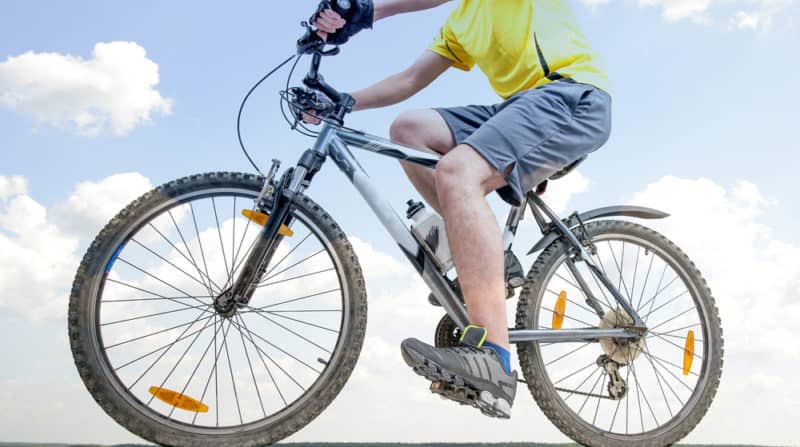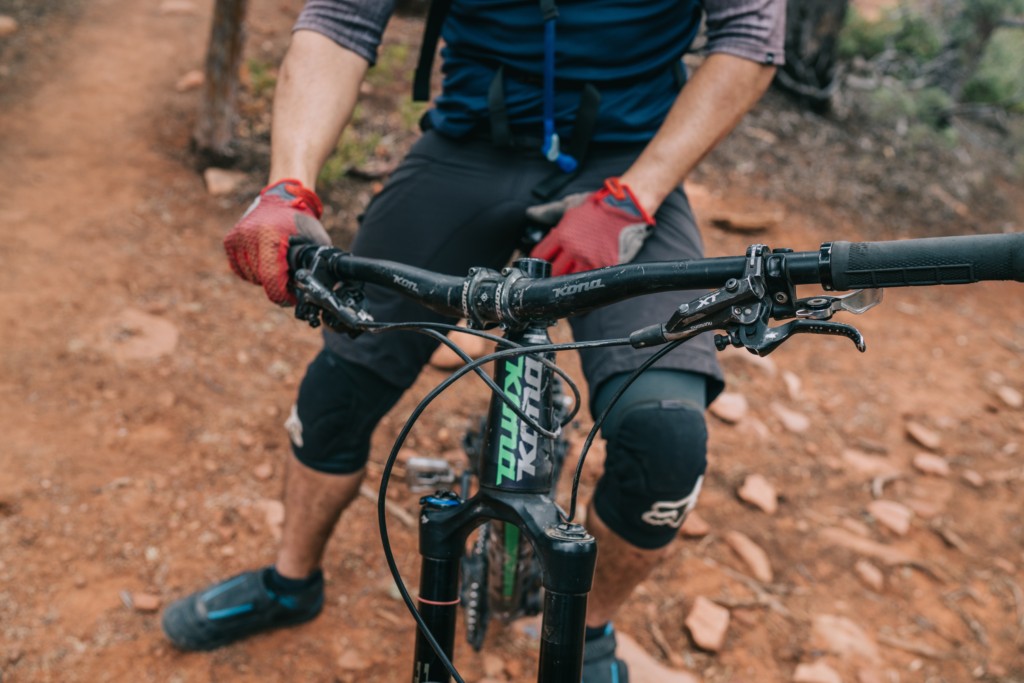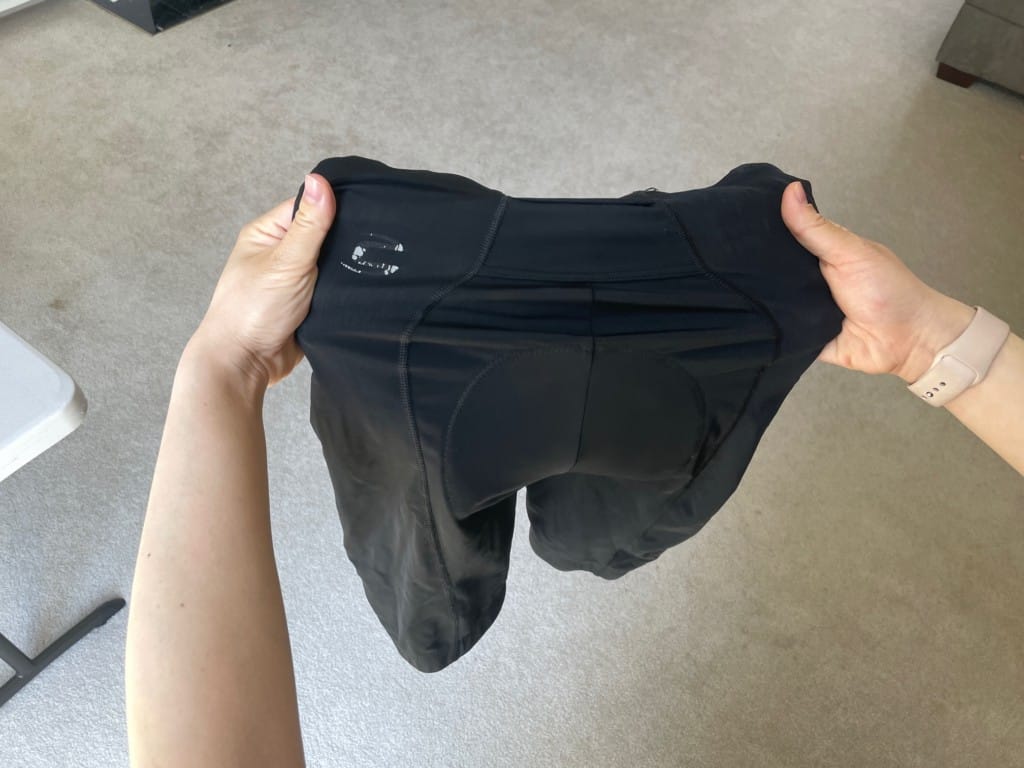Padding under your mountain bike shorts should be an essential part of your riding gear…for comfort but also protection.
If it’s so essential, does that mean all mountain biking shorts are padded?
Actually, no. Some mountain bike shorts feature a built-in padded liner to protect your groin and butt from bike saddle discomfort. However, most shorts (especially less expensive options) don’t have this padded liner. In this case, you’ll need to buy padded shorts separately and wear them underneath your bike shorts.
We’ll discuss why some mountain bike shorts are lined with padding and others are not, and how they differ from road cycling shorts. No matter which shorts you buy, we’ll also cover how padded shorts should fit so you can have the most comfortable ride possible!
Where is the Padding in Mountain Bike Shorts?

Mountain bike short padding is sewn into a liner made of lycra (or some other super stretchy material) which is worn underneath (or incorporated directly into) the outside shell.
The padding is designed to protect the perineum: a highly sensitive bundle of nerves at the base of your groin. It will also protect your butt. These two areas are prone to discomfort if you put in a lot of hours on the saddle. If you’ve ever ridden without padded shorts, you probably haven’t done it twice!
The padded area will resemble the shape of your bike’s saddle in order to offer the most coverage possible. This is typically the only padding you’ll find: some short liners may feature padding for your thighs and knees, but these are classified as body armor or protection, not shorts, and are sold separately.
Types of Mountain Bike Shorts
Shorts With Built-In Liner
Some mountain bike shorts feature a padded liner sewn directly into them. Generally, you’ll find this on more expensive shorts. It’s much more convenient to have padding sewn into the shorts directly, as it offers a more precise fit. It also means one less layer of clothing you need to wear.
Aside from the premium price, the only downside to shorts with a built-in liner is they’re less versatile. If you’re meeting with friends at the local brewery, you’re not going to want to rock your sweet mountain bike shorts and deal with that padding…cause it can be a little constricting (kinda like wearing underwear with swim trunks at the beach).
Shorts Without Built-In Liner
Less expensive shorts typically do not have a padded liner sewn in. This means you’ll need to buy and wear padding underneath. Padded liners vary widely in price; they can cost as little as $10 or more than $100, and the fit won’t feel as integrated because they can bunch up underneath bike shorts.
Personally I prefer buying shorts without a padded liner. They’re more versatile (I wear them all the time) and the $12 padded liner I bought separately on Amazon, while probably not the best quality, has held up for over a year so far and is pretty comfortable. Not a bad investment!
How Should Padded Mountain Bike Shorts Fit?

Fit is a very individual thing, but when it comes to padded mountain bike shorts, there are some general guidelines to consider. With shorts featuring built-in padding, the liner size will correlate to the waist size. For instance, the liner in a 30 waist will be smaller and fit tighter than in a 36 waist.
Sounds obvious right?
But I would also take into account your hip measurement. Most short size guides will feature this measurement as well, and it can help you more accurately dial in the fit. If you’ve got a small waist but a larger butt (or vice versa) you may want to consider hip measurement first (i.e. waist size doesn’t really matter if you can’t squeeze into the shorts).
You really don’t want that liner fitting too snug (which can be uncomfortable) or too loose (nobody wants chafing).
If you’re purchasing a padded liner separately, the same rules apply. Look at the waist and hip measurement, and if you’re between sizes, I recommend sizing up. Padded liners stretch a fair bit, and feeling constricted in that region on a long ride is no fun at all. Don’t be the person constantly getting caught “adjusting” your liner!
One last note: if you’re a frequent online shopper, I highly recommend trying on shorts in-person if possible. All brands will fit and feel different, so if you can try on something from your preferred brand before buying, it will guarantee you get the right size.
Take it from someone with some weird measurements and a lot of experience returning stuff I order online because it doesn’t fit well.
Why Are Mountain Bike Shorts So Long?
You’ve probably noticed mountain bike shorts are pretty long. If you’re a 90’s kid like me, they may bring back (terrible) fashion memories of those cargo or jean shorts you used to wear.
Mountain biking can be a much rougher activity than road biking: you’re constantly at risk of getting hit with trail debris flying up from your tires, getting slapped with branches and, of course, crashing. The more of your legs the shorts cover, the more protection you get.
If you wear knee pads (if you ride gnarly terrain, you really should), the long shorts will cover the tops of the knee pads, which can help prevent them from slipping down, especially if you fall directly on them. Knee pads only work if they’re actually covering your knees!
Mountain Bike Shorts vs. Cycling Shorts (Differences)

The differences between mountain bike and road cycling shorts are pretty significant.
Road cycling shorts are made of lycra and fit very close to the body, for the purpose of reducing drag and improving aerodynamics (the same reason road cyclist helmets are designed differently from mountain bike helmets).
You can learn more about how cycling shorts help riders here.
Mountain bike shorts are made of a more durable polyester blend that feels more like casual shorts. They typically have some degree of water resistance and are designed to wick away sweat. This provides better protection from dirt, mud, rain and any other trail hazard.
Mountain bike shorts are also much longer and feature a looser fit. More coverage means more protection, and a looser fit means you can move around on the bike more freely. Mountain biking requires you to change positions much more often than road cycling, where you may be in the same hunched riding position for miles at a time.
This baggier fit also allows you to wear more protection underneath, such as knee pads or full shin guards if you’re a downhill rider.
Can You Wear Road Cycling Shorts Mountain Biking?
Road cycling shorts may be comfortable, lighter and more aerodynamic, but they’re much less rugged and durable than mountain biking shorts. They’re also unlikely to stand up to the rigors of mountain biking, and don’t provide you as much protection from debris, trail obstacles or an unexpected crash.
If you’re a cross-country mountain biker, you may be fine wearing your road shorts or bibs. XC riders prioritize speed and lightness, as this discipline is defined by longer rides with a significant amount of climbing, and far fewer technical descents.
Trail, enduro or downhill riders will want to invest in decent trail-oriented riding apparel. The more durable, looser fit will offer better protection, while allowing room for padding underneath. These riding styles are less about climbing and more about descending…a different skill-set requiring different gear.
If you’re a road cyclist and mountain biker, it may be tempting to just wear your road gear while mountain biking, but depending on your preferred riding style, you’ll be much better equipped to handle whatever the trails throw at you if you buy shorts designed specifically for mountain biking!
